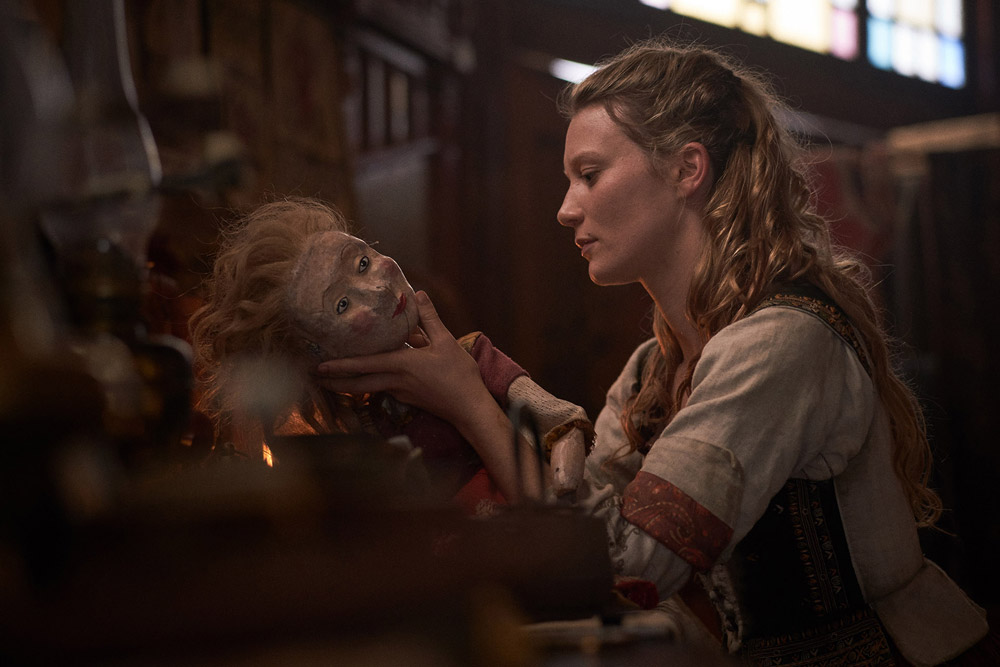Until the applause started at the Sundance Film Festival where “Judy and Punch” premiered last year, Mirrah Foulkes didn’t know entirely whether anyone would appreciate it.
“When you’ve really deliberately set out to make something that’s not easily compartmentalized, that doesn’t sit clearly in one genre or another, the reality is that people are going to have really diverse reactions to the film and as much as you think you want that, that can also be very challenging,” says Foulkes. “But when I have those moments when someone really gets it — and I have them often — I have to stop my cynical brain from kicking in and going, ‘That’s just what people say,” I have to try to truly believe and embrace that and trust that that person’s experience has been what they say it is.”
One suspects this was on the mind of the actress-turned-director not only when considering the reception to “Judy and Punch,” but the conception of it when Vice Studios approached her with a pitch to turn the Punch and Judy puppet shows that had been popular during the 17th and 18th centuries into a feature. (Making this story just a bit stranger, it was the comedienne Lucy Punch and her brother Tom that had first originated the idea.) Foulkes, who had been working towards her first feature by making shorts with the Australian collective Blue Tongue Films, but saw something far more sinister in the children’s entertainment than generation after generation previously had when a show’s rousing conclusion often involved Judy being beaten by a stick at the hands of Punch.
It isn’t just the title of “Judy and Punch” that puts its heroine first, casting Mia Wasikowska as the titular beleaguered partner of Punch (Damon Herriman), an abusive puppeteer who is even more violent than usual after setting up in the countryside village of Seaside with the hopes that someone will see their act and bring them back to a city stage. Although the locals love the act — and with an annual stoning day, it’s easy to see why — their guineas are hardly enough to provide Punch with the life he sees for himself, and it falls upon Judy to keep him in good spirits, even if the experience can be unrelentingly belittling. A tragedy flips the script, but not in the ways you might think as Foulkes fashions an unconventional tale of how Judy discovers the strength within herself to create an entirely new life as she embeds with a collection of outcasts in the forest on the fringes of town and cleverly shows how a culture that accepts violence for its entertainment is shaped by it in reality.
Brutal in both its subject and its dark humor, “Judy and Punch” exudes confidence while its lead gradually discovers it and makes Foulkes only the latest director from Blue Tongue, a group that has gifted the world with the likes of Nash and Joel Edgerton and David Michod, to establish herself as a distinctive new voice. With the film now arriving on VOD and digital, she spoke about having the leeway to create her own world with her wildly original feature debut, blending ideas of theatricality and reality into the film and how a story of puppets inspired her to dig deeper into the human side of things.
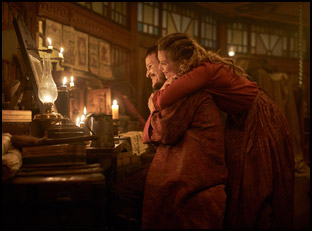
Yeah, they wanted to make a movie about Punch and Judy and I wanted to work with them, so I thought yeah, I’ll have a go and it took off in all sorts of strange directions. I had worked with them a couple of times on my short films before and they wanted to do interesting, bold, weird stuff and that’s what I wanted to do as well, so it worked out. I had this feeling with Vice that I had this weird and rare opportunity to really go for it and try and make something bold and I thought I might not get this opportunity again with what is essentially a studio film, so I just took it and ran with it. I didn’t think a lot about the ambition of it until later on when I had to figure out how to make it. That became a whole other new set of complications. [laughs]
There is a theatricality weaved into the fabric of the film — one of my favorite things is how there’s literally a curtain that’s pulled back outdoors to lead into the forest. Was that a foundational idea?
Yeah, I love that world too. There’s a part of me that would’ve enjoyed making an entire film in that world with those heretic outcasts because it was fun. [laughs] I wanted to thread through this idea of different communities living in different ways, and the pulling open the curtains metaphor was all part of having kind of meta layers throughout the film of different stages and different versions of how people might exist upon or within those stages. That whole world of [the outcasts] came out of little tangents of research about what happened socially and politically at the time and there’s a bit of historical playfulness in terms of specific dates, but certainly this notion of communities dealing with people they thought to be witches was prominent at that time. In a way, I became more interested in that community than in the world of the puppets [because] I never actually liked puppets very much. [laughs] I wanted to make a movie about puppeteers where I avoided too many puppets because I find that people are more interesting.
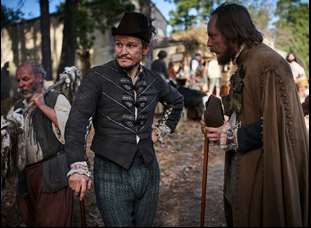
I’m carrying on the tradition. [laughs] I think it’s a coincidence, but on some kind of subconscious level, that stuff is filtered through. It is interesting because I really love how every one of the directors at Blue Tongue is very, very different. You can probably spot any of their films [even] if you didn’t know who directed it, and I really like that. We’re always involved in each other’s stuff to a point, some more so than others, but I do think if there’s kind of one thing that I’ve learned from those guys, it’s been about trying to hone and refine your own individual and specific voice, [which] is important as a filmmaker and really nice when you’re working in a collective, to be able to rely on the support and the guidance of one another, but also try really hard to forge your own stylistic path. I’ve been really blessed to have all those guys around me as friends and mentors, but I certainly am not sure this film would’ve ever come out of their brains. None of their films would’ve come out of mine.
I don’t want to spoil the most shocking moment in the film, but since the old adage is don’t work with kids and animals, but did that give you the idea to have a scenario with both involved?
Oh man. If there’s a lesson in there, it’s listen to the old adages. For fuck’s sake, don’t ignore them because they’re there for a reason. [laughs] It was such a struggle. A lot of people talk about the tonal or visual ambitions, but I find that exciting [when] you’re treading a really fine tonal line and you’re trying to do something that’s unique, and none of that is as terrifying as working as a baby and a dog in the same scene. We did that stuff my first shoot day and it was just such a fucking disaster. It really was. We kept saying through the whole shoot, “I’m never doing this again. No more babies. No more dogs.” But there’s got to be something that challenges you.
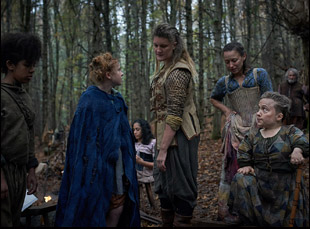
We did a lot of prep. Stefan Duscio, the [director of photography], and myself talked a lot about being economical with camera and to find places without getting too tricksy because I don’t really like being tricksy unless it pertains to story, but [also] because we didn’t have time on this film. It was so fast. Sometimes if you can nail a really great shot on a steadicam, it can be an economical way of working. Other times, it takes so long to rehearse that shot that you end up thinking, “God, I should’ve covered this in a regular way and I would’ve been better off.” [laughs] But we did really want to have a sense of the camera moving through the world with a floaty ease to it and trying to minimize our set-ups when we could.
We had a great steadicam operator and Stefan’s such an invaluable person to have on a shoot, someone who just nails it and especially when you’re under the kind of time constraints that we were under, you don’t have time to get that stuff wrong. You’ve got to get it all or if you’re not getting it quickly, abandon it and come up with another solution. [That particular scene with the dog] we did prep a lot and that was partly a choice that we wanted to have a very specific and distinct way of covering the scenes, but also we didn’t have the time to play around, and I like that way of working. I had never done that before and I really quite enjoyed it as long as you allow yourself the freedom to deviate from the path when something else presents itself that’s more interesting.
Was there anything that was unexpected that’s in the film that you really like it now?
I’m sure there’s hundreds of things, and it’s one of the most wondrous things about filmmaking. There were small, visual things like we were just about to break for lunch one day and it was right in the guts of autumn and the winds whipped up and all these leaves started gently falling and we grabbed the camera, chucked it on Stef’s shoulder and there’s a scene now. But then actors also bring a whole world of things and they just make things better. A lot of actors in our movie had done a lot of theater work and I just love working with those kind of actors because they’re trained to offer stuff up. Gillian Jones, who plays Dr. Goodtime, the idea of having her tent full of snakes was something that came from her. She had this whole thought pattern around her character being an oracle [because] there was a reference to a Greek oracle that was surrounded by serpents, so she wanted snakes in the tent. That stuff happens all the time and it’s so great when you’re on set and you discover something that’s so much better than you originally thought.
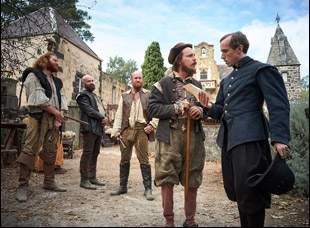
First and foremost is to just give them the space to do their jobs well and try and fight to give them as much time as I can, which is not always possible. It was very sobering for me being on the other side of the camera, realizing how hard it is for directors to split their brains between so many different places. But I tried really hard to create an energy on set that balances being serious because we’re here to do good work and also playful enough for the actors to feel relaxed in that environment. I try and fight for rehearsal time because I believe it’s really beneficial, but not all actors like it and the actors that don’t, I tend to want to push them into liking it [laughs] because I firmly believe nothing bad can come out of rehearsals. I don’t believe in this idea that something can become stale or overworked, but I try to adapt to each actor’s preferred way of working, which is often difficult and it usually takes you half the shoot to figure out what that is.
How did you find this remarkable location for this?
All that town stuff is shot in this place called Montsalvat, which is an artists colony really quite close to Melbourne [Central Business District]. It’s really only about an hour drive and when I was first writing the movie, I imagined we’d shoot somewhere in Eastern Europe, but when it first started to become clear that we could make the movie in Australia and get the most bang for our buck, I realized we had to try and find a way to see if that was visually possible. I was pretty skeptical, but Montsalvat was one of those locations that opened up the possibilities. We spent a lot of our time there, probably a little over half of our shoot and then it just became a jigsaw puzzle of piecing the other bits together. Australia doesn’t look anything like Europe — we have a lot of gum trees and very few deciduous trees, and our autumn or fall doesn’t look like European autumn, so it was challenging, but out of those challenges, you become resourceful. Like you’re talking about earlier, you discover things that were perhaps better than what you imagine they would be, so I really love how the film looks and I really love it when people don’t recognize it as Australia.
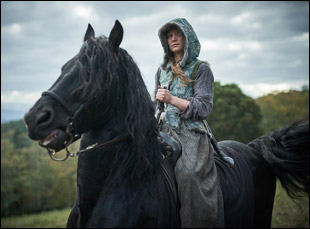
I’ll never forget that. I was terrified, and I think you’d be crazy if you weren’t, but I got to set at 4 a.m. and it was pitch black. The art department were dressing that first kitchen set, which I hadn’t seen before and there was just a few work lights here and there in corners, but I just sat down by the fireplace and watched them work for a minute and it was such a mad feeling, a huge mix of fear and anticipation and excitement and gratitude. It was really cool and I think you’ve got to hold onto those moments because there’s so much trauma amongst it all. There are so many moments where you walk off the set, going, “I’m never fucking doing this again.” But if you hold onto those few moments that are just about the magic of it, then you just want to keep doing it. You forget about the trauma pretty quickly.
I hope you do because you’re an incredible filmmaker.
I’ve forgotten already. [laughs]
“Judy and Punch” will be available on VOD and iTunes on June 5th.




